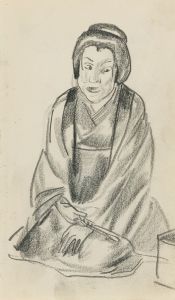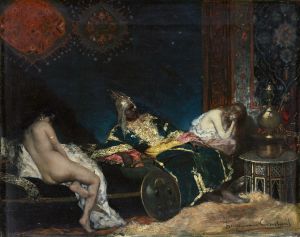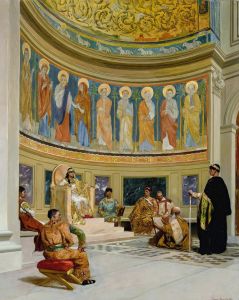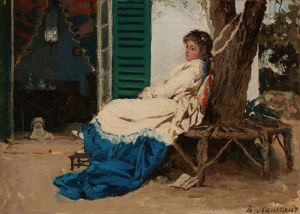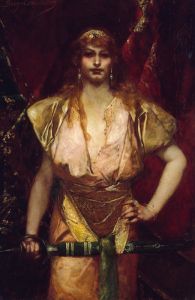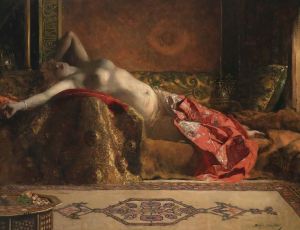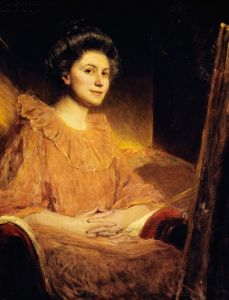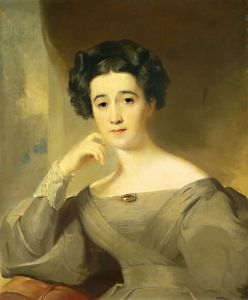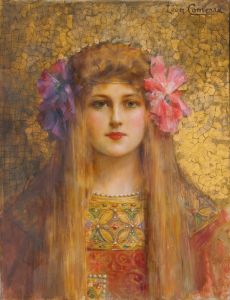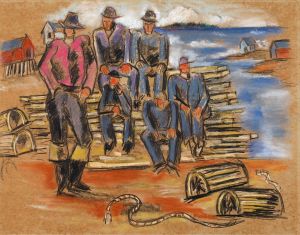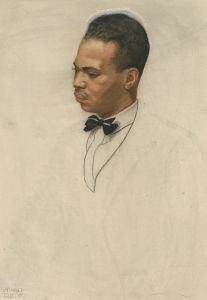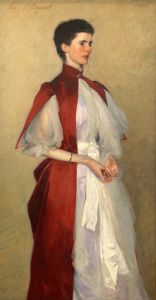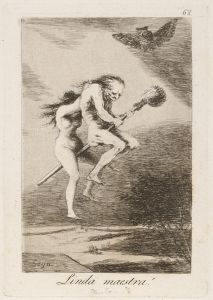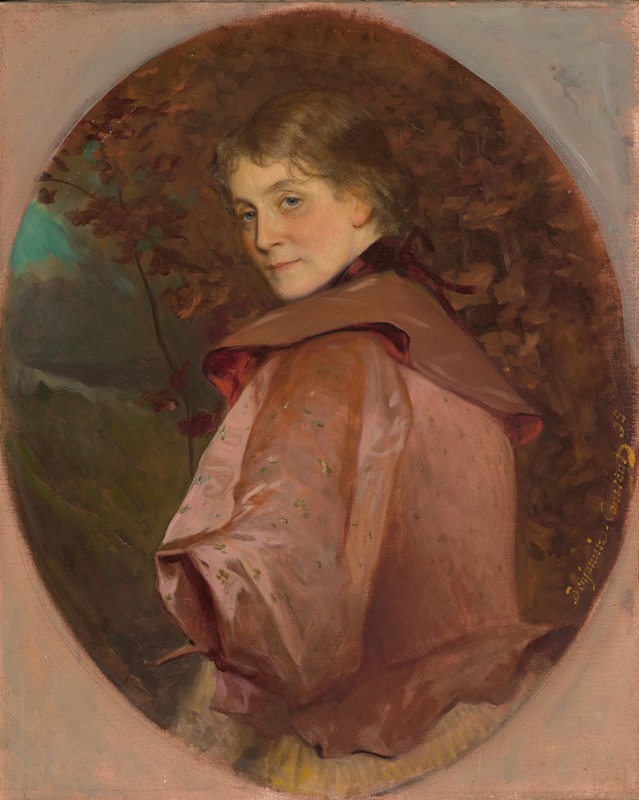
Mary Newton Foote Henderson
A hand-painted replica of Jean-Joseph-Benjamin Constant’s masterpiece Mary Newton Foote Henderson, meticulously crafted by professional artists to capture the true essence of the original. Each piece is created with museum-quality canvas and rare mineral pigments, carefully painted by experienced artists with delicate brushstrokes and rich, layered colors to perfectly recreate the texture of the original artwork. Unlike machine-printed reproductions, this hand-painted version brings the painting to life, infused with the artist’s emotions and skill in every stroke. Whether for personal collection or home decoration, it instantly elevates the artistic atmosphere of any space.
Jean-Joseph-Benjamin Constant was a prominent French painter known for his Orientalist works and portraits. One of his notable portraits is of Mary Newton Foote Henderson, an influential figure in Washington, D.C., during the late 19th and early 20th centuries. This portrait captures the essence of Henderson, who was not only a socialite but also an advocate for urban planning and public health.
Mary Henderson was born in 1841 and became a significant figure in Washington society through her marriage to John B. Henderson, a U.S. Senator from Missouri. She was deeply involved in the cultural and social life of the capital. Her interests extended beyond the social sphere, as she was an advocate for the beautification of Washington, D.C., and played a role in the development of the city's infrastructure. Her efforts included promoting the construction of parks and public spaces, which were part of a broader movement to improve urban living conditions.
The portrait by Constant is a testament to Henderson's status and influence. Constant, who was born in 1845 in Paris, was known for his skill in capturing the character and status of his subjects. He studied at the École des Beaux-Arts and became associated with the Orientalist movement, which was characterized by depictions of Eastern cultures through a Western lens. However, his portrait work, such as that of Mary Henderson, demonstrated his versatility and ability to convey the personality and social standing of his subjects.
In the portrait, Henderson is depicted with a sense of dignity and poise, reflecting her prominent role in society. The painting likely emphasizes her elegance and the sophistication of her attire, which would have been in line with the fashion of the time. Constant's use of color and light would have been employed to highlight her features and convey a sense of her character.
This portrait is significant not only as a work of art but also as a historical document that provides insight into the life of a woman who contributed to the shaping of Washington, D.C. Mary Henderson's legacy includes her advocacy for urban improvement and her influence on the social and cultural fabric of the capital. The portrait by Constant serves as a visual representation of her impact and the esteem in which she was held by her contemporaries.
Jean-Joseph-Benjamin Constant's work, including the portrait of Mary Newton Foote Henderson, remains an important part of art history, illustrating the intersection of art, society, and history. His ability to capture the essence of his subjects ensures that figures like Henderson are remembered not only for their contributions but also for their presence and personality as captured on canvas.





